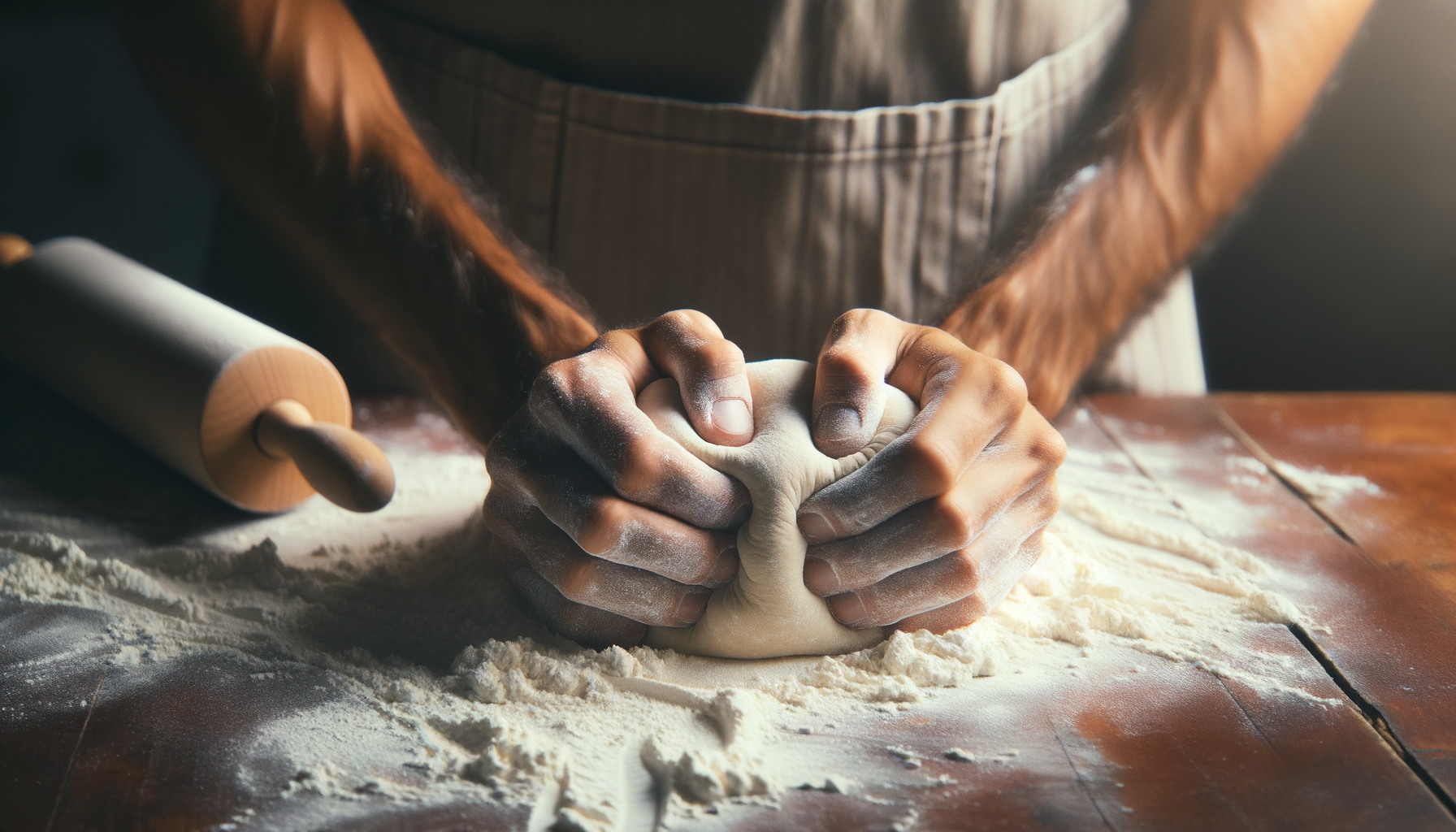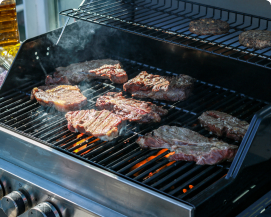The Art of Handmade Pasta
Pasta, the quintessential staple of Italian cuisine, has won the hearts of food lovers all over the world. Its simplistic material makeup belies a complex creation process, especially when made by hand. Handmade pasta is truly a labor of love, a testament to the culinary passion that turns simple ingredients into an artful masterpiece.
Ingredients: The Building Blocks of Pasta
The beauty of handmade pasta lies in its simplicity. Basic though the ingredients may be – typically just flour, eggs, and water – it is the quality of these ingredients that can elevate the humble noodle to gastronomic glory. Consider selecting high-grade semolina or ‘00’ flour to provide the right gluten content, which results in a satisfying texture. Fresh, organic eggs can offer a rich flavor and color to the pasta.
The Kneading Process: Where Magic Begins
Kneading is more than just a process; it’s a ritual. A well-kneaded dough is the foundation of great pasta. The trick lies in developing the gluten by working the dough with your hands, folding, and pushing until it becomes silky and elastic. The goal is to achieve a texture that is firm yet pliable, without any stickiness. This labor-intensive step can take anywhere from 10 to 20 minutes, demanding patience and strength.
Rolling and Shaping: Craftsmanship Meets Creativity
Rolling out pasta dough into thin, even sheets is a skill honed with time and practice. Those who swear by old-world methods use a rolling pin, while others might prefer a pasta machine to achieve a consistent thickness. Regardless of the tool, the aim is uniformity, which ensures that the pasta cooks evenly.
The true charm of handmade pasta is the array of shapes and sizes that can be created. From the delicate strands of spaghetti to the stuffed pockets of ravioli, the diversity is boundless. Each form is not just aesthetically pleasing but is designed to hold sauces in different ways, blending with them to create a harmonious bite every time.
Drying: The Underrated Essential
Drying pasta before cooking can seem like a step easily skipped, but it is essential for quality. Even if you plan to cook the pasta immediately, a brief drying period can help stabilize the shape and surface of the noodles. Air circulation plays a crucial role in properly dried pasta, so laying the noodles or shapes out in a single layer, with adequate space around them, is key.
Cooking: The Final Act
Cooking handmade pasta is both swift and crucial. Unlike its store-bought counterpart, fresh pasta takes mere minutes to cook. Arguably, the most important aspect of this step is the cooking water itself. It should be generously salted—savory as the sea, many chefs say—for it’s this water that will infuse the pasta with its baseline flavor. As it cooks, the pasta should be tested frequently, aiming for ‘al dente’ — firm to the bite, yet cooked through.
Sauces and Pairings: Complementing Your Creation
While delightful on its own, pasta shines when accompanied by a sauce or pairing. A light drizzle of quality olive oil and a sprinkle of herbs can sometimes be enough to elevate the dish. Yet, whether you choose a robust Bolognese, a creamy Alfredo, or a fresh tomato basil sauce, the aim is the same: to marry the sauce and pasta in such a way that neither overwhelms the other.
Tools of the Trade
The right tools can make the pasta-making process more efficient and enjoyable. A pasta machine, a well-floured wooden board, a sharp knife or pasta cutter, and various moldings for shaping are just a few of the implements that can enhance the homemade pasta experience.
Health Benefits: More Than Just Comfort Food
Aside from being a sensorial delight, fresh handmade pasta has health benefits. Homemade means you control the ingredients, opting for whole grains or alternative flours if you wish, potentially delivering a healthier dish rich in nutrients and devoid of preservatives.
The Meditative Process: Good for The Soul
The act of making pasta can serve as a meditative process. The tactile experience of kneading dough, the rhythmic rolling and cutting, all create room for mindfulness. It’s an opportunity to disconnect from the digital world and connect with the food, resulting in a dish imbued with care and intention.
Passing Down Traditions: An Heirloom of Taste
One of the most heartwarming aspects of handmade pasta is its role in heritage and tradition. Family recipes passed down through generations serve as tangible links to the past. Children learn from parents, just as they did, creating a thread that weaves through time, bestowing more than just culinary lessons but also stories and memories.
Global Variations: A World of Pasta
While pasta is synonymous with Italy, many cultures have their own versions of handmade noodles. From the dumplings of Asia to the Spaetzle of Germany, almost every tradition has a variant of dough combined with a rolling and shaping process, reiterating just how universal the love for pasta is.
Modern Twists: Innovating Tradition
In the modern kitchen, handmade pasta sees innovative twists, with chefs incorporating unconventional ingredients like squid ink, spinach, or even chocolate into their dough. The fusion of flavors, colors, and textures not only adds a contemporary flair but also showcases the infinite possibilities that simple pasta presents.
Finishing Thoughts
The journey of creating handmade pasta is one of passion, patience, and pride. From selecting the finest ingredients to the joy of kneading, rolling, and shaping, every step is a part of the craft. The labor of love extends through the cooking process and culminates in the pleasure of sharing the fruits of one’s labor with family and friends. It’s not merely a dish to be eaten; it’s an experience to be savored, a tradition to be preserved, and a craft to be celebrated. Homemade pasta, in all its humble grandeur, is more than food—it’s an art, it’s culture, and above all, it’s a testament to the love weaved into its creation.
Frequently Asked Questions
What is Handmade Pasta?
Handmade pasta is pasta that is made from scratch using simple ingredients like flour, eggs, and water. Unlike machine-made pasta which is produced on a larger scale, handmade pasta is crafted by hand, offering a different texture and a more authentic experience. The process of kneading, rolling, and shaping the dough is done manually, allowing for a variety of shapes and sizes.
What Makes Handmade Pasta a “Labor of Love”?
The process of making pasta by hand is time-consuming and requires patience, skill, and dedication. Each step, from mixing the ingredients to kneading the dough and shaping the pasta, is done with careful attention to detail. It’s a labor of love because it involves putting personal care and effort into creating something special and delicious that can be shared with family and friends.
Are There Different Types of Handmade Pasta?
Yes, there are many types of handmade pasta, each with its unique shape, size, and texture. Some popular types include tagliatelle, pappardelle, ravioli, tortellini, and gnocchi. The pasta type may vary depending on the region in Italy or personal preference.
What Tools Do I Need to Make Handmade Pasta?
The basic tools needed for making handmade pasta include a large mixing bowl, a fork or a dough scraper, a rolling pin or pasta rolling machine, and a sharp knife or pasta cutter. More specialized shapes might require specific cutters or molds, such as those used for making ravioli or tortellini.
Is Handmade Pasta Healthier than Store-Bought?
Handmade pasta can be healthier as it typically contains no preservatives and is made with fresh, whole ingredients. You also have the ability to control what goes into your pasta, such as using whole wheat flour or adding spinach for extra nutrition. However, the fundamental nutritional value is similar when it comes to the primary ingredients.
How Long Does it Take to Make Handmade Pasta?
The time it takes to make handmade pasta can vary. Mixing and kneading the dough usually take about 10-20 minutes, while resting the dough takes about 30 minutes. Rolling and shaping can take anywhere from 30 minutes to an hour, depending on the pasta shape and your skill level. All in all, reserve a couple of hours from start to finish for the process.
Can Handmade Pasta Be Made in Advance?
Yes, handmade pasta can be made in advance. You can dry it and store it in an airtight container for later use, or you can freeze it. Fresh pasta can be kept in the refrigerator for a couple of days if you plan to use it soon.
What is the Best Flour for Making Handmade Pasta?
The best flour for making handmade pasta is typically a high-protein flour such as “00” flour, which is finely ground and commonly used in Italy for pasta making. Semolina flour is also a popular choice due to its coarser texture and higher gluten content which provides a firmer pasta. Whole wheat flour can be used for a healthier option, though it will give the pasta a different texture and flavor.
How Should I Cook Handmade Pasta?
Handmade pasta should be cooked in a large pot of salted boiling water for a shorter time than store-bought dried pasta, often between 2-6 minutes, depending on the thickness and shape. It’s recommended to taste the pasta for doneness rather than strictly timing it. Once done, it should be al dente, tender with a slight bite.
Do I Need a Pasta Machine to Make Handmade Pasta?
While a pasta machine can make the rolling and cutting process easier, especially for thin pasta like tagliatelle or spaghetti, it is not necessary. Many traditional recipes are made entirely by hand with a rolling pin and a sharp knife or cutter.
Are There Vegan Options for Handmade Pasta?
Yes, vegan handmade pasta options are available and can be made without eggs. Alternative doughs can be made using ingredients like semolina flour and water, or by substituting eggs with flaxseed or chia seed mixtures to bind the dough.
Is Handmade Pasta Suitable for Special Diets?
Handmade pasta can be adapted for certain dietary restrictions. Gluten-free flour blends can be used to make the pasta suitable for those with gluten intolerances or celiac disease, and, as mentioned earlier, egg substitutes can be used for vegan diets. It’s important to check specific dietary needs and adapt the ingredients accordingly.













